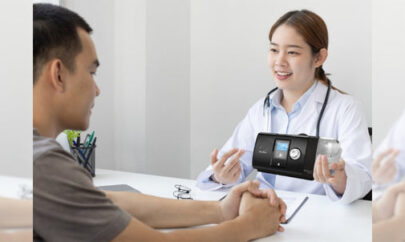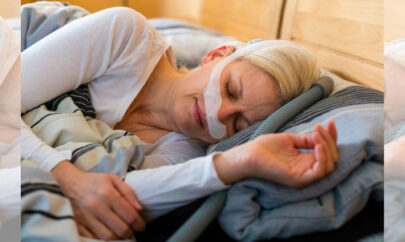
Understanding Your BiPAP Machine Settings
Although CPAP is usually the first positive airway pressure device prescribed to treat obstructive sleep apnea, not everyone can tolerate
We use cookies to help you navigate efficiently and perform certain functions. You will find detailed information about all cookies under each consent category below.
The cookies that are categorized as "Necessary" are stored on your browser as they are essential for enabling the basic functionalities of the site. ...
Necessary cookies are required to enable the basic features of this site, such as providing secure log-in or adjusting your consent preferences. These cookies do not store any personally identifiable data.
Functional cookies help perform certain functionalities like sharing the content of the website on social media platforms, collecting feedback, and other third-party features.
Analytical cookies are used to understand how visitors interact with the website. These cookies help provide information on metrics such as the number of visitors, bounce rate, traffic source, etc.
Performance cookies are used to understand and analyze the key performance indexes of the website which helps in delivering a better user experience for the visitors.
Advertisement cookies are used to provide visitors with customized advertisements based on the pages you visited previously and to analyze the effectiveness of the ad campaigns.

Although CPAP is usually the first positive airway pressure device prescribed to treat obstructive sleep apnea, not everyone can tolerate

The pain and discomfort caused by arthritis can make falling asleep and staying asleep more difficult. Indeed, it is estimated

Sleep apnea is a disorder that increases the risk of developing further serious health conditions when left uncontrolled. Diagnosis

Continuous positive airway pressure (CPAP), BiPAP and APAP therapy can effectively reduce the symptoms of sleep apnea. This improves the quality of your sleep and reduces the risk of developing serious health issues linked to sleep apnea.

APAP is used to treat obstructive sleep apnea, a disorder where the airways become blocked as the muscles in the throat relax when you sleep.

Various types of PAP therapy are available to treat sleep apnea. What’s better for you when weighing up CPAP vs BiPAP vs APAP?

BiPAP is a form of ventilator that delivers air through a mask to help you breathe. It is a non-invasive treatment most associated with treating sleep apnea but can be used with other health conditions that cause breathing difficulties.

Here are some strategies to avoid moisture accumulating and dripping down into your mask if you’re experiencing CPAP rainout even with a heated hose.

A comfortable mask with a secure seal is key to sticking to your APAP, BiPAP or CPAP therapy. Learn how to maximize comfort with the Respironics Wisp nasal CPAP mask.

Everyone is different, and pressure settings on your CPAP device may not always be the same. Learn how to tailor your ResMed CPAP machine settings for more comfortable and effective sleep therapy.

Learn practical tips to make your CPAP quieter, so you can achieve peaceful and undisturbed sleep each night.

Regularly replacing CPAP supplies is important in effectively treating obstructive sleep apnea. It is equally imperative to regularly clean CPAP parts including the mask cushion, tubing, headgear, and humidifier chamber.

If obstructive sleep apnea is disrupting your rest, here is some insight into whether or not you are one of the viable individuals who needs a CPAP device.

A continuous positive airway pressure (or CPAP) device is widely recognized as being the best and most effective treatment for obstructive sleep apnea. However, the market for these CPAP devices is continually expanding and improvements in performance usually accompany the latest versions.

Obstructive sleep apnea is a disorder that results in interrupted sleep. Interruptions are a result of frequent breathing pauses caused by obstructed airways. In cases of moderate to severe obstructive sleep apnea, continuous positive airway pressure (CPAP) therapy is recommended as a primary treatment.

Obstructive sleep apnea (OSA) is caused by a blockage of the upper airways when the muscles in the throat relax while you sleep. This results in breathing difficulties that can see you briefly wake hundreds of times through the night, sometimes gasping for air. Each breathing pause sees a drop in oxygen levels.